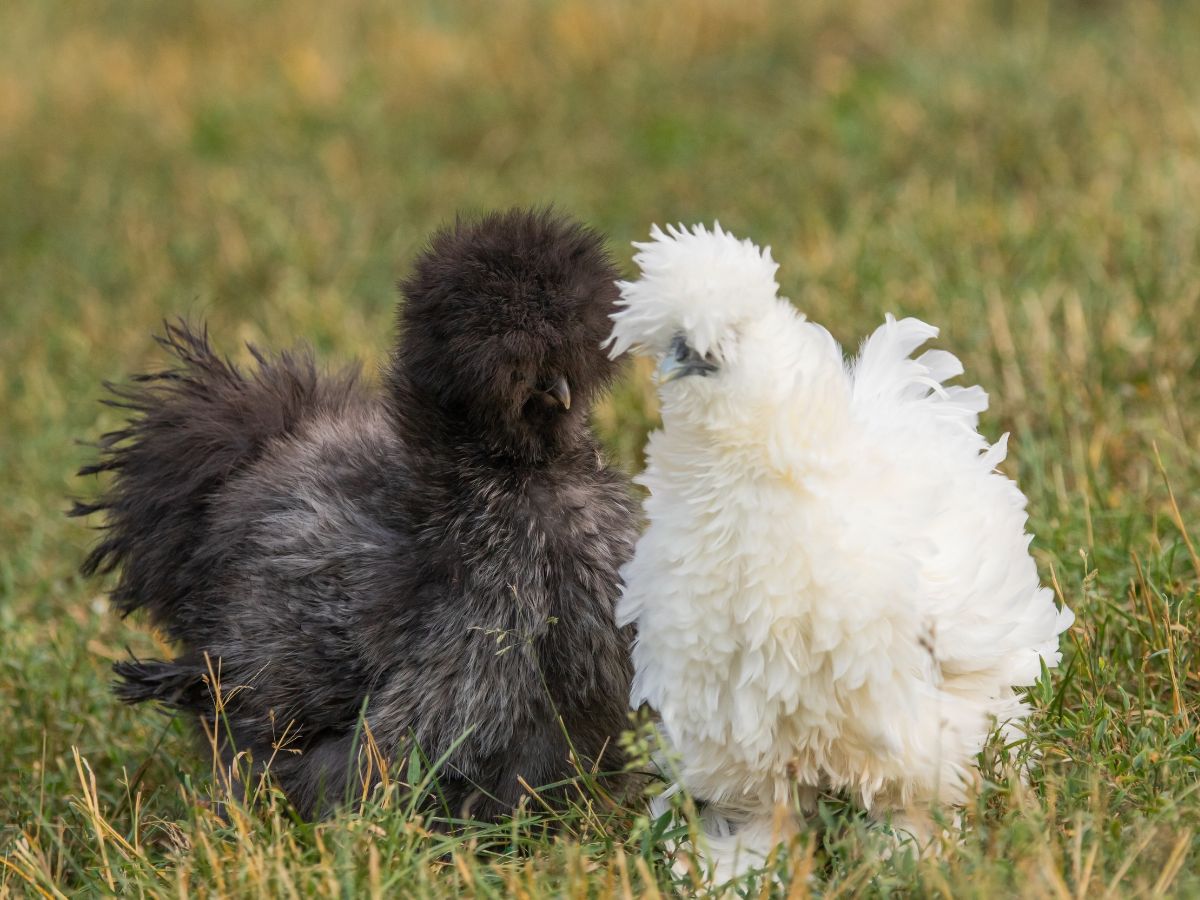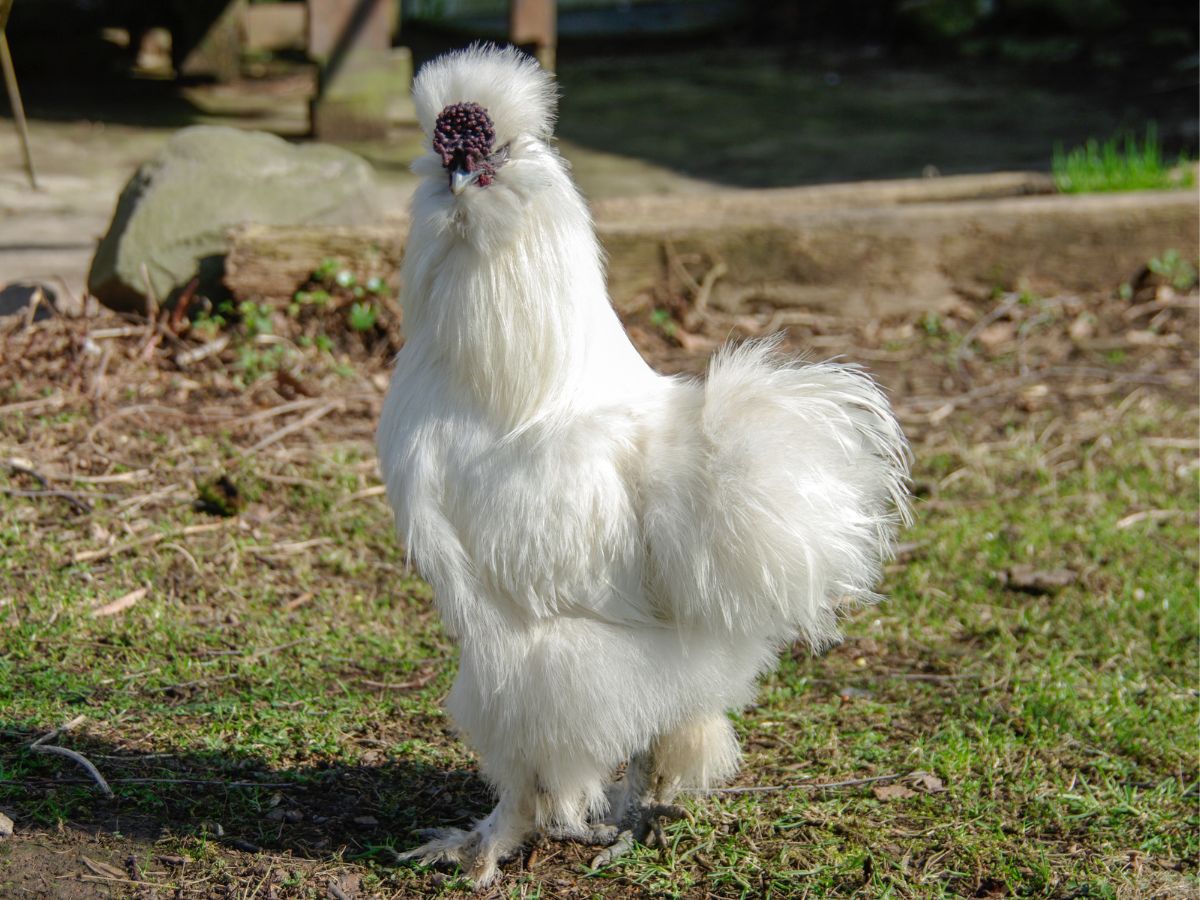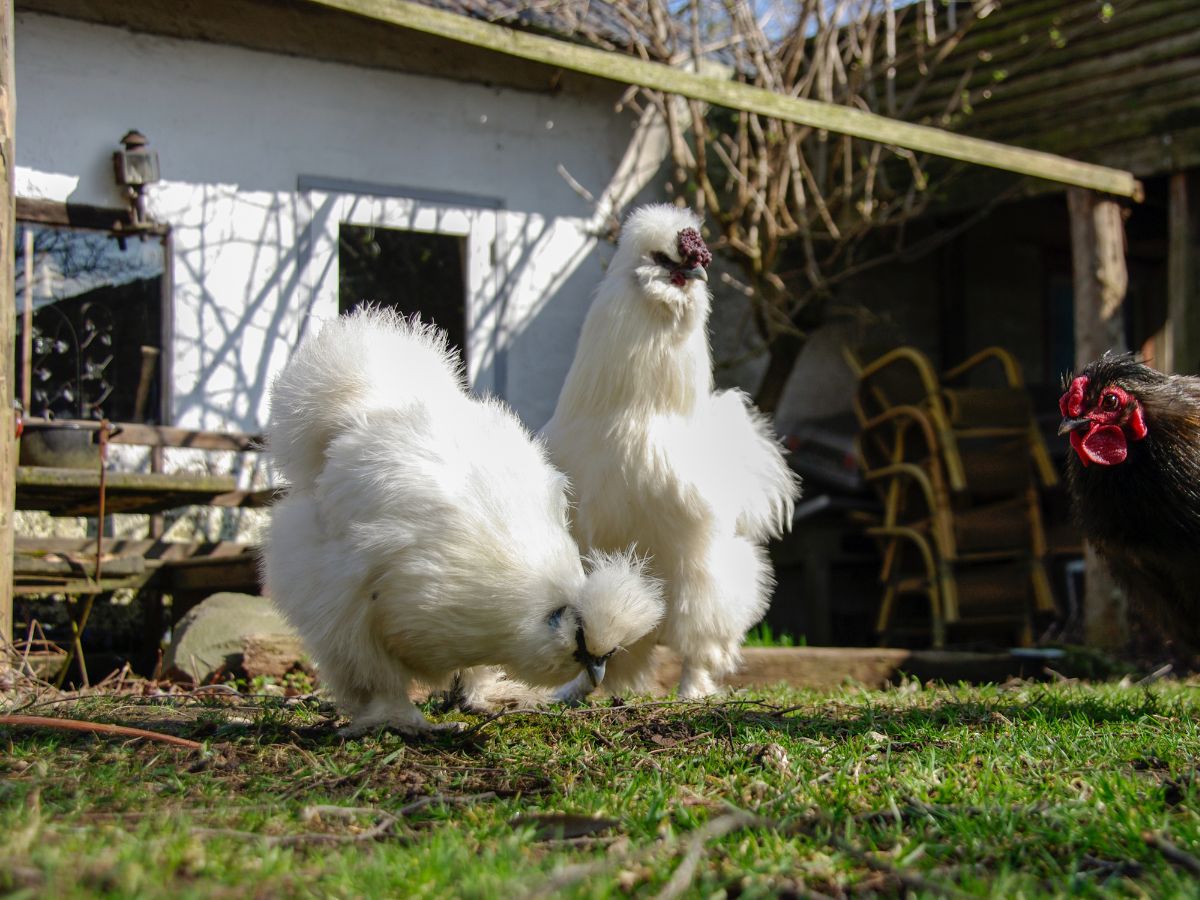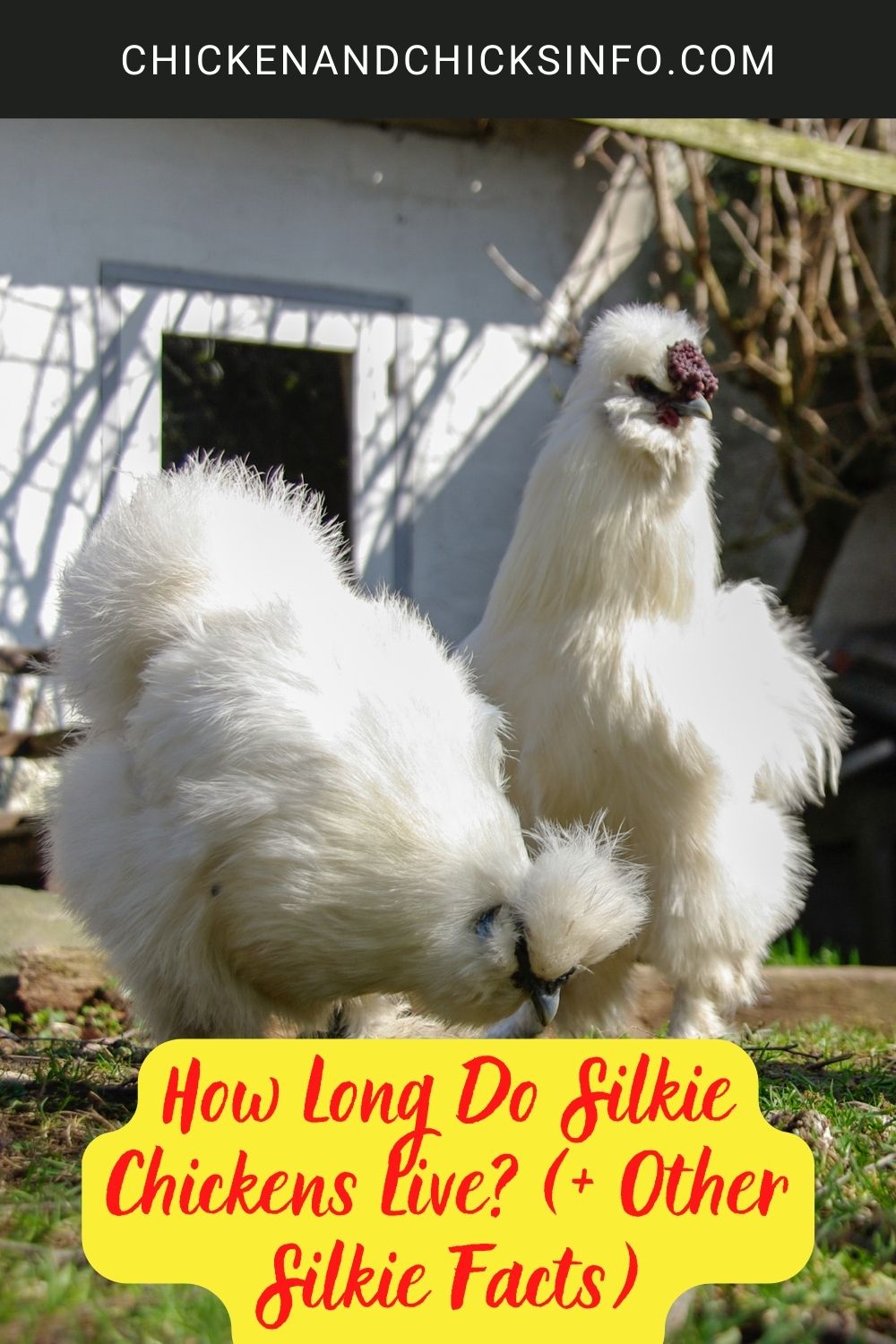
Silkie chickens live between 7-9 years on average. There are some things you can do to ensure they live a long and happy life, however, and I’ve heard of Silkies living to 12-13 years of age.
Jump to:
What Are Silkie Chickens?
Silkie chickens are a breed of chicken that gets their name because they have fluffy coats. It feels like you’re running your hand across silk when you stroke them - it's worth going out of your way to experience it.
They are popular as backyard chicken pets because they’re common, easy to look after and have a unique and cuddly appearance. Just look at one of the pictures, what’s not to love about these little fluff balls?
Factors That Impact Life Expectancy of Silkies
While 7-9 years is the average lifespan, there are some factors that affect how long a chicken will live for. Especially how healthy and happy they’ll be along the way too.
Diet

It’s easy to give chickens a well-balanced diet nowadays, so this shouldn’t be an issue.
The bulk of a chicken’s diet will come from a quality feed appropriate for their age. This will make sure they’re meeting most, if not all of their nutritional requirements.
To supplement their diet and make sure they’re getting some variation and other vitamins and minerals you can share table scraps with them.
This typically means bits of fruits and vegetables. Such as bananas, radish, tomatoes, and so on. Always check the food you’re going to share with them is safe, however. Most of the foods we eat are, so it’s likely to be fine but you still have to check.
Environment
The better the living conditions your chickens have, the better their long-term health will be and the longer, happier life you can expect them to live.
This basically means providing a stress-free environment. So, plenty of space to roam, other hens to socialize with, clean and airy coop, and so on.
Disease
While chickens are generally healthy animals, there are some things we need to do to prevent disease.
You should speak with your vet about care specific to the breed and age of your chooks. As a general rule, however, you should keep a close eye on them for any signs of parasites, lice, or worms.
Some illnesses will affect your little chooks and there will be nothing you could have done to prevent it. That’s life. It’s how you handle it and the preventative measures in place that limit the risk.
Health Care
On the topic of illness, the standard of healthcare you provide your chickens has a huge impact on their life expectancy. This will not come as a surprise, it’s the same for us!
When you start keeping backyard chickens, make some calls and do some research to find a vet in your area that specializes in poultry. It’s always good to have a point of contact in case of an emergency.
Related content - Why is my chicken screaming so much?
How to Care for Silkie Chickens

Silkies are really easy to care for (source). If you have experience looking after backyard chickens, it’ll be a breeze.
If you’re new to keeping chickens, they’re one of the easiest to get started with.
Here are the basics:
Housing with an adequate coop
Being small birds, Silkies don’t need as much room as other chickens. You should provide at least 8” of the coop for every chick in your flock.
Follow the usual guidelines for building or buying a coop with a wire mesh that provides plenty of ventilation, and is still capable of keeping predators out.
Related content - How to deal with roaches in your chicken’s coop.
Set up a Chicken Run
Chickens need space to roam. They’ll be much happier and healthier if they can roam around pecking for grubs and insects, eating grass, and socializing.
You can do this by either setting up a run or enclosing a space in your yard. Just remember to round them up at night so they can sleep safely in their coop.
Provide Nesting Boxes
Silkies will lay around 100 eggs a year if they have everything they need. One of the most important things is a nesting box, so they have somewhere safe to lay their eggs.
You’ll need at least one box per 4-5 Silkies, and some nice soft bedding in it for the eggs to sit on. Pop in each day and see if there’s something for you.
Related content - How many nesting boxes needed per chicken?
Food and Water
As I mentioned above, diet is one of the most important factors that affect how long and how healthy life your chickens will have.
Invest in the best feeder and water drinkers you can. Make sure they have fresh drinking water available at all times. Provide a quality chicken feed once a day, and add some fresh fruit and veg or table scraps to their diet as you learn more about what they like and don’t like.
Grit
Don’t forget grit. This is something that often surprises new chicken owners, but chickens - and this includes Silkies - don’t have teeth. They eat grit, which is small rocks or similar, to help them break down their food.
They will self-moderate how much grit they need. You just need to make sure there is some available
What Are Silkies Like as Pets?

If you’re looking for a breed of chicken that will be a great pet as well as an egg layer, Silkies are one of the best choices.
For the most part, they are kept as an ornamental breed. This is because they have such an unusual look for a chicken. They are fluffy and cute, and there is quite a competitive show circuit for this reason.
They have a very sweet nature and calm temperament too, which is always a plus when you’re keeping a chicken as a pet. They are very social, so if you want to spend time with them, they’ll be happy to spend time with you, too.
And, they’re typically very quiet. Another reason why they make good pets for you (and your neighbors).
Silkies really are one of the best chickens to keep as a pet. Both from a temperament and a companion perspective.
Colors of Silkies Chickens
Silkies come in a wide variety of colors. For competitive showing, however, the colors of Silkies that are recognized by the show boards are:
- Black
- White
- Blue
- Buff
- Grey
- Partridge
Perfect show standards also call for all Silkies to have turquoise earlobes, dark wattles, and a small walnut-shaped comb.
Another interesting characteristic about them is that their meat is a grayish-black. There bones and skin are also black or dark bluish.
Some Interesting Facts About Silkie Chickens
Silkie chickens are one of the more interesting breeds. Not only are they the cutest chickens (in my opinion, but look at those images!), but they have some unique characteristics.
Silkies’ feathers don’t have barbs - The reason they’re so fluffy is that their feathers don’t have barbs. Barbs are the thick strands holding feathers in line. Without those, it gives them that fluffy look.
Silkies have 5 toes - Chickens have 4 toes, right? Well, Silkies have 5 toes on each foot. Their extra digit doesn’t look like it belongs on their foot, but it’s there. This is known as polydactyly.
Silkies have electric blue ear lobes - Some people say they’re turquoise, some bright blue, but there’s no denying their earlobes are a striking shade of blue. You can really see them standing out on the white Silkies.
Related content - where are chicken’s ears located?
Silkies have black bones and skin - You might never see a Silkie’s bones, but you can see their skin around their face, legs, and if you part their feathers.
Silkies produce cream color eggs - I don’t know about you, but I always expected they’d produce an unusual color egg. They actually produce cream color eggs, and typically lay about 100 in a year.
Silkies are very maternal - They are great at sitting on eggs, and will even sit on other birds’ eggs for them. Not just chickens, but they’ve been known to look at turkey and duck eggs too!
Wrapping Up
Those of you who landed here that don’t already have Silkies, I bet you now know you want to keep this wonderful breed of chicken, right?
Maybe I’m biased because I’m a big fan of Silkies. But there’s no denying they are one of the most interesting looking chickens, and being so social, fluffy, and easy to look after, it’s hard to resist adding these to your flock.





